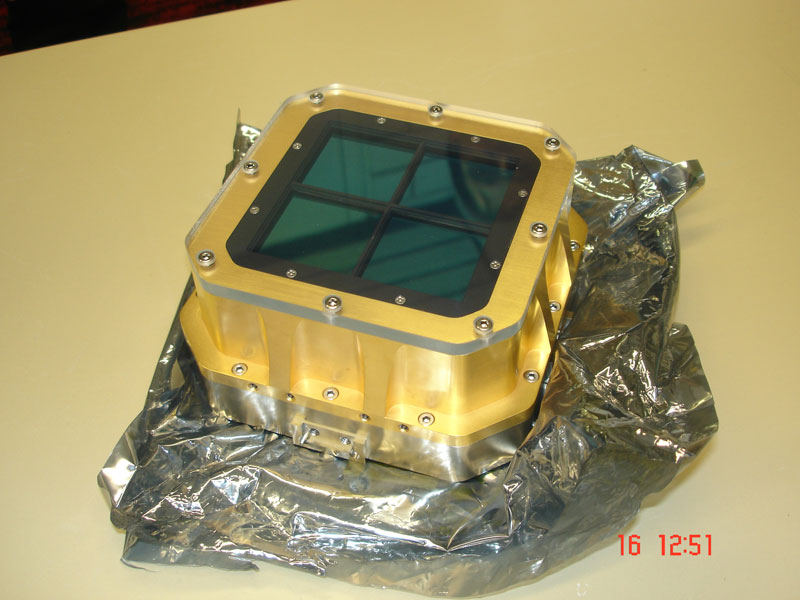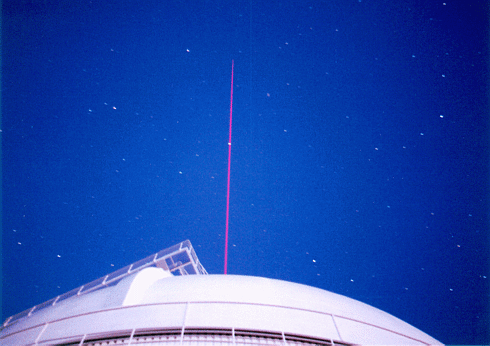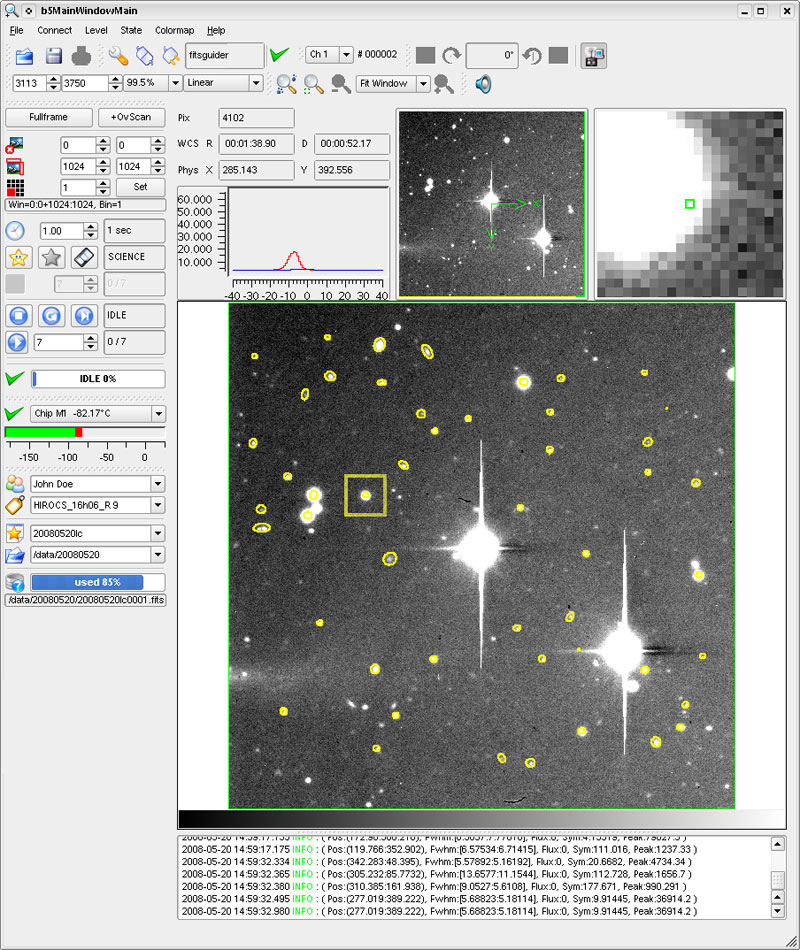| Version 177 (modified by , 8 years ago) (diff) |
|---|
The AstroTechTalk (ger) offers a place to discuss, for all interested colleagues and especially for the technical departments, the project leaders, the administration and the scientists as the ultimately users:
- status of instrumentation projects
- scientific tasks and features of the instruments in construction or planned
- new possible involvements
- technical innovations and developments
- technical problems and their solutions
- logistical problems and their solutions
- how to improve operation and observation
- project standards.
Time: Always Fridays 11:00 - 12:00
Location: Hörsaal
Outline:
- Announcements (news, visitors, etc.) (mainly in German)
- Talk of about 30 min about a selected topic (German or English, will be announced)
- Follow up discussion and questions (German or English, depending on the speaker)
Please send proposals for talks via e-mail to: gaessler, hofferbert - or also available in room 021 or 211.
| Date | Speaker | Topic |
| 15.01.2016 | Andreas Quirrenbach (ZAH, LSW Heidelberg) | The commissioning of CARMENES CARMENES is as new instrument, which has been installed and commissioned at Calar Alto in the second half of 2015. Besides the Landesternwarte, MPIA and CAHA another eight institutions in Germany and in Spain participated in the development of CARMENES. This consortium will devote the coming three years to search for planets around very small and low-mass stars (so-called red dwarfs). One prime goal is the discovery of earth-like planets comprising surface temperatures, which allow for the evolution of life. To reach the necessary sensitivity and precision, CARMENES is equipped with two extremely stable spectrographs, one for the visible and one for the NIR wavelength range, respectively. Those are installed inside dedicated vacuum tanks in the dome's Coudé lab and coupled via fibers to the 3.5m telescope. Between 2016 and 2018, 80% of the observing time of the 3.5m telescope are reserved for the CARMENES survey. During the remaining night time the instrument is available for any other project. Presentation: German Slides: German Questions: German, English |
| 22.01.2016 | Ralph Hofferbert | On the way to the stars: Shipping of LINC-NIRVANA to the LBT As already written on our Christmas card: Wintry mood prevailed in November 2015 on top of Mount Graham, Arizona, at the Large Binocular Telescope (LBT): After more than ten years of planning, manufacturing and testing, LINC-NIRVANA found its ultimate mounting pad between the two primary mirrors of the LBT for the first time. The near infrared imaging instrument shall combine – depending on the implementation phase – adaptive optics and interferometric beam combination of the two mirrors to achieve ultra high spatial resolution. Beforehand, the instrument had been disassembled and made a 6-week-trip over the Atlantic as one oversize transport plus nine sea containers. In the months to come the delicate optical components and the cryogenic near-infrared camera will be re-integrated, such that LINC-NIRVANA and the telescope get finally married from mid of 2016 on. The talk will mainly address the aspects related to the shipping and the initial installation at LBT. Besides that, the prime features of the instrument itself and the planned activities for 2016 will be briefly described. Presentation: German Slides: German Part1 Part2 Part3 Part4 (or here) Questions: German, English |
| 29.01.2016 | Werner Laun | No silhouettes for the VLTI, two massive stainless steel sculptures from Matisse Henri Matisse spent most of his lifetime in Nice and is buried there as well. This is not the plan for the interferometer of the same name, which is designated for the VLTI in Chile. Currently, the instrument is still in the test phase at the Observatoire de la Cote d’Azur and is supposed to start its journey to South America in 2017. The MPIA has a quite heavy contribution to this project: Both cryostats, each with a mass of 1.5 metric tons, have been built in Heidelberg. Various boundary conditions, contraints and interfaces required a specific and custom-made realisation. The talk tries describing in a vivid and generally understandable way how the technological challenges have been solved. Presentation: German Slides: Englisch Questions: German, English |
| 05.02.2016 | -- | Carnival break |
| 12.02.2016 | -- | Carnival break |
| 19.02.2016 | Jeroen Bouwman | Precise spectro-photometry from space The first thing, which naturally comes to mind when asked what one can do with spectra, is the detection of spectral lines of atomic and molecular gas or the signature of dust grains. With this, the chemistry and physical conditions of very different astronomical environments can be probed, like stellar and planetary atmospheres and the interstellar medium and molecular clouds. For many applications such as radial velocity measurements a high spectral resolution and very accurate wavelength calibration is more important than a precise absolute flux calibration of the measurements. However, many scientific applications exist where highly accurate spectro-photometric (i.e. the absolute and relative flux calibration for each spectral channel) is crucial. One can think of spectroscopic observations of transiting exoplanets, time-variability of circumstellar disks or simply constructing spectral energy distributions by combining the observations of multiple instruments spanning a wide wavelength range. Jeroen Bouwman will discuss some of the problems encountered and their solutions to achieve precise spectro-photometry from space for three different spectrographs: The low resolution spectrograph of Spitzer, the photoconductor array camera and spectrometer of Herschel, and the mid-infrared instruments of the James Webb Space Telescope. Presentation: German Slides: Englisch Questions: German, English |
| 26.02.2016 | Florian Rodler | The search for Earth 2.0 More than 20 years ago, the first exoplanet orbiting a sun-like star was discovered. In these 20 years, a completely new branch of astronomy has been created: the search for exoplanets and especially for earth-like planets. We are getting closer and closer in finding an answer to one of the oldest and most fundamental questions of mankind: Are we alone in the universe? Is there life outside the earth? Rather soon, astronomy will undergo a revolution - new giant telescopes are about to be built allowing for an investigation of those faraway worlds in the coming years with a precision surpassing all current standards. We will be the first generation of human beings, which will discover extraterrestial signs of life. Florian Rodler will briefly talk about the discovery methods for exoplanets. He will present the current status of research in this field and will sketch those strategies, which allow scientists to identify habitable planets and to find the signatures of life. Presentation: German Slides: German Questions: German, English |
| 04.03.2016 | -- | No speaker found |
| 11.03.2016 | Markus Poessel | Gravitational waves and how to detect them |
| 18.03.2016 | Nadine Neumayer | What makes ARGOS unique? - Observations with ARGOS |
| 25.03.2016 | -- | Easter break (Good Friday) |
| 01.04.2016 | Mark Norris | TBD |
| 08.04.2016 | Sascha Douffet | Safety responsibles - Main actors and their work |
| 15.04.2016 | Alexander Sivitilli | Laser Alignment Teleskop |
| 22.04.2016 | Armin Boehm | Rebuilding of the mechanical workshop (date TBC) |
| 29.04.2016 | No talk | Festkolloquium Thomas Henning |
| 06.05.2016 | -- | Bridging day (Ascension Day) |
| 13.05.2016 | Frank Kittmann | Software development for astronomical instrumentation |
| 20.05.2016 | -- | Pentecost break |
| 27.05.2016 | -- | Bridging day (Corpus Christi) |
| 03.06.2016 | Thales Gutcke | What do galaxies consist of? State-of-the-art simulations of galaxy formation |
| 10.06.2016 | ||
| 17.06.2016 | Florian Schindler (Dr. Johannes Heidenhain GmbH) | High-precision angular gauges for telescopes |
| 24.06.2016 | -- | Fachbeirat |
| 01.07.2016 | ||
| 08.07.2016 | ||
| 15.07.2016 | Santiago Barboza | The MICADO derotator test stand |
| 22.07.2016 | -- | Summer break |
| 29.07.2016 | -- | Summer break |
Preview:
Postview:
Presentations from 01.08-31.12.2015
Attachments (11)
- instrum8_gr.jpg (82.6 KB) - added by 10 years ago.
- instrum4_gr.jpg (104.4 KB) - added by 10 years ago.
- pedv3_gr.jpg (213.9 KB) - added by 10 years ago.
- alfa3.5.gif (235.6 KB) - added by 10 years ago.
- CIAO.jpg (3.8 MB) - added by 8 years ago.
- linc_nirvana_labor.jpg (255.2 KB) - added by 8 years ago.
- MATISSE.jpg (43.1 KB) - added by 8 years ago.
- miri_fm_filterwheel.jpg (145.6 KB) - added by 8 years ago.
- PACS-Chopper.jpg (80.0 KB) - added by 8 years ago.
- simple_loop.gif (965.4 KB) - added by 8 years ago.
- teaser.jpg (13.5 KB) - added by 8 years ago.
Download all attachments as: .zip




